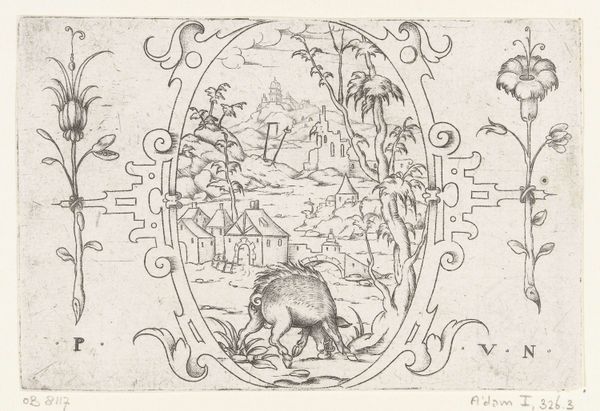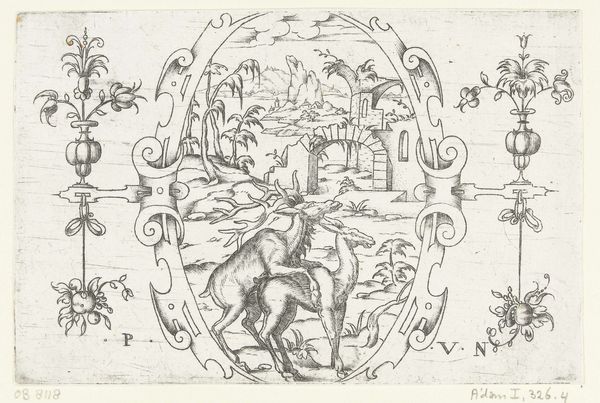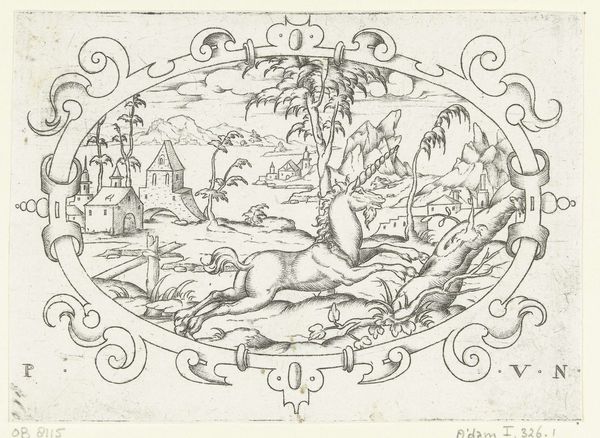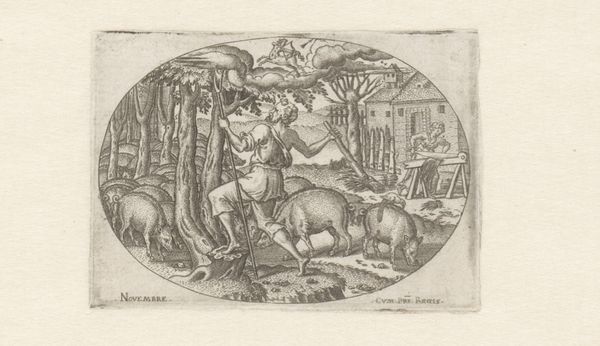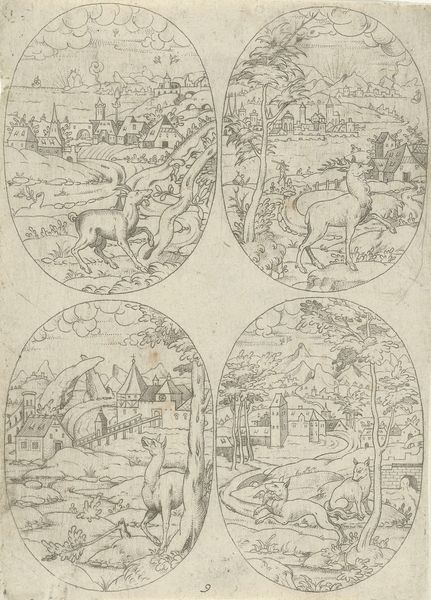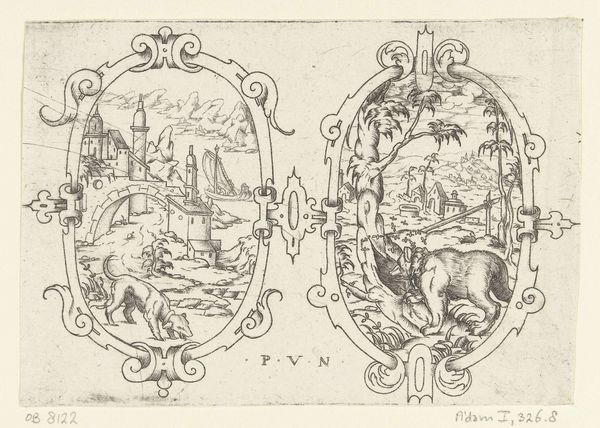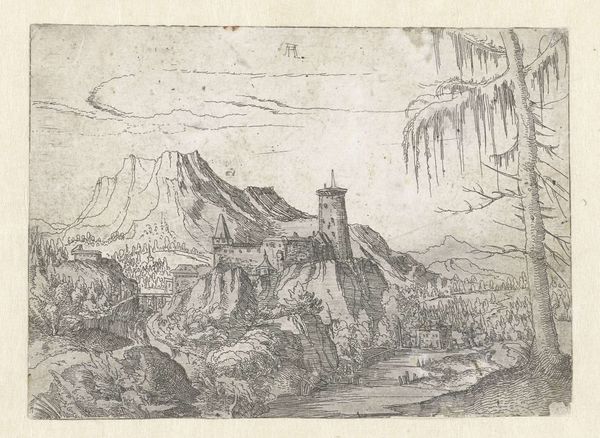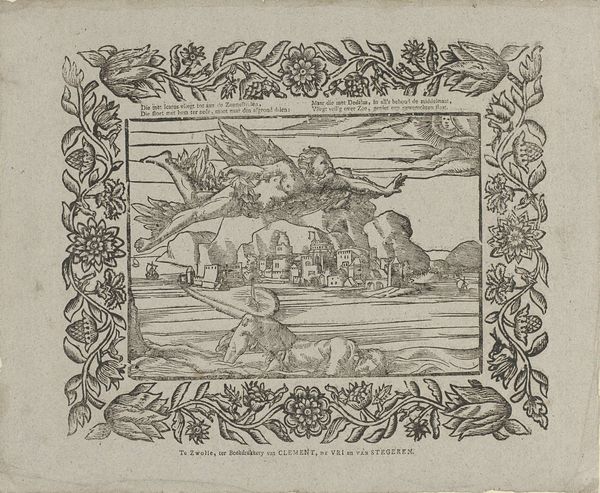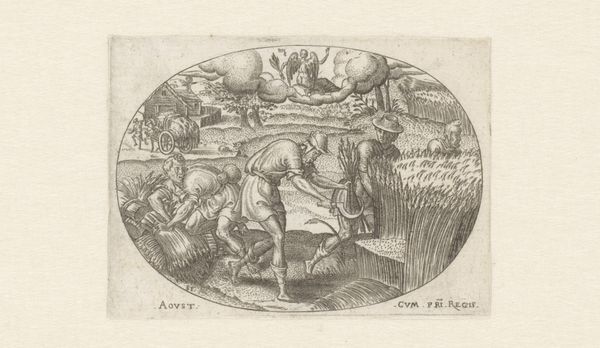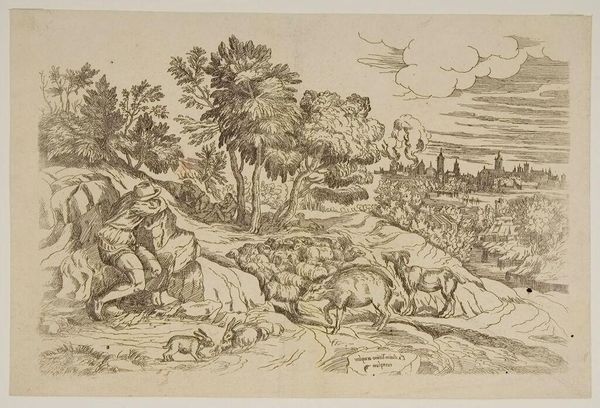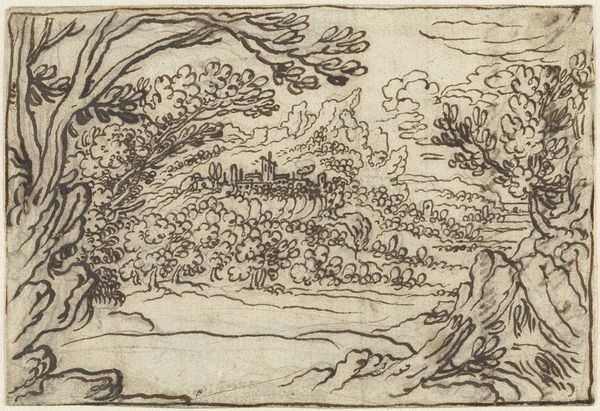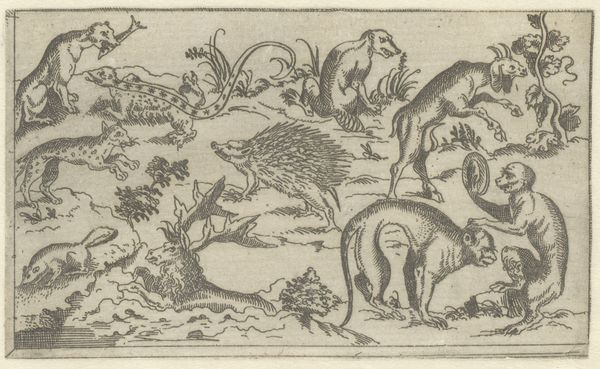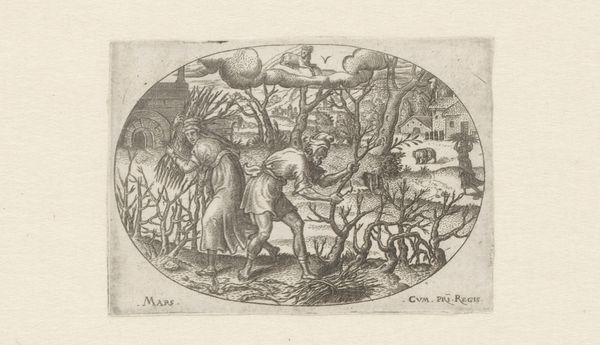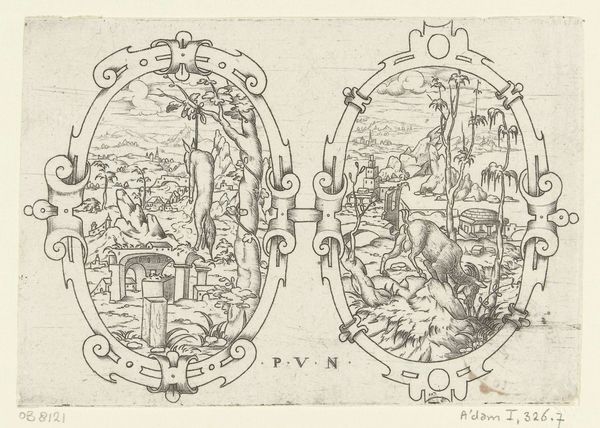
Liggend ovaal met een hond die een konijn doodbijt c. 17th century
0:00
0:00
print, engraving
#
baroque
#
pen drawing
#
animal
# print
#
landscape
#
engraving
Dimensions: height 100 mm, width 151 mm
Copyright: Rijks Museum: Open Domain
Paul (de Jonge) Flindt made this oval print of a dog killing a rabbit sometime before 1631. It’s an etching, meaning the artist covered a metal plate with a waxy ground, drew this composition into it with a needle, and then bathed the plate in acid. The acid bit into the metal only where the needle had exposed it, resulting in an incised image that could then be inked and printed. Consider the material result: a crisp, precise line, ideal for capturing the drama of the hunt. The contrast between the placid landscape in the background, complete with charming buildings and a bridge, and the brutal action in the foreground, is heightened by the starkness of the lines. Look closely, and you can see how Flindt varied the density of the lines to create tonal effects, suggesting light and shadow. Printmaking in this period was a highly skilled, labor-intensive process. It was also essential to the circulation of imagery, an early form of mass media. The very act of production and reproduction imbues this image with a wider cultural significance, one that resonates with the social hierarchies of the time. This etching proves that even a seemingly simple image can reveal complex relationships between material, making, and social context.
Comments
No comments
Be the first to comment and join the conversation on the ultimate creative platform.
